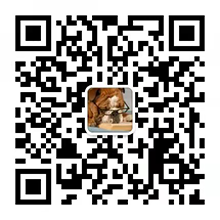英语中,介词后面经常跟名词或名词词组、代词、动名词或句子。有时名词会有修饰词,但整体上仍然是名词或名词词组;不可以跟形容词,副词等。
介词的用法是什么
一.基本介词分析
1. at用于表示时刻,时间的某一点。在小地点。用于节日前(festival)
例:at noon在午时
at night在夜间
at present目前
at school上学
at home在家
at the school gate在校门口
at the springfestival 在春节
2. on在...上面;具体到某一天;用于节日前(day)
例:on the table在桌上,
on Sunday在星期天,
on tomorrow morning在明早
on Children’sDay在儿童节,
onMay Day在劳动节
3. In 用于表示月、季节、年、泛指上午、下午、晚上;大地点;语言前面。
例:in November在11月
in 1999 在1999年
in English 用英语
in Summer 在夏季
in the afternoon在下午
in Shanghai在上海
4. with 和...一起;具有,带有;用某种工具或方法;在某方面
例:play with me和我一起玩
a person with big eyes大眼睛的人
bite the net with his sharp teeth = use his sharp teeth to...
help me with my homework在我作业方面帮助我
5. by 通过……方法,手段;在...附近;
例:He opened the door by using the key.
by bus乘公共汽车 sit by the river
6. of属于……的,表示…的数量或种类
例:a friend of mine我的一个朋友
the number of ...的数量
the kind of..的种类
注意:the key to...的钥匙
the answer to...答案
7.to 到达……地点(目的地)或方向
例:get to 到达 give...to...把...给
8. for表示目的,为了…
例:buy...for... 为...买...
make...for... 为...制作
二、相近介词分析
1.near ,by
①near:近的,不远的(=not far)是的反义词,near还可以指时间,in the near future在不远的将来。
②by:在……旁边,比near的距离要近
by the river
2.between,among ,around
①between:在两者之间 between...and
②among:在三者或者更多的之中。be popular among
③around:环绕,在…..的周围,在……的四周
There is a park around myschool.
3.in front of,in the front of
①in front of 在...前面(范围之内)
There is a car in front ofthe house .房子前面有一辆小汽车。
②in the front of 在...前面(范围之外)
There is a blackboard in thefront of the classroom.
4.in ,into ,out ,out of
①in:在…之内,用于表示静止的位置
There are four girls in theroom.房间里有4个女孩。
②into:进入,用于表示有特定终点的运动方向,通常用于表示动作的动作之后。如:come into,go into ,walk into ,jump into ,run into.
she took mefrom the hall into my classroom .她把我从门厅带进我的教室里边去。p分页标题e
5、along ,across,through
①along:沿着
Go along thisroad and turn right at the second crossing .
沿着这条路走然后在第二个十这路口向右拐。
②across:横过(平面物体)
③through:贯通,通过
walk through the forest
6、to ,for ,from
①到达……地点(目的地)或方向
②for:表示目的,为了…
③from:从……地点起
7、介词at、to表方向,攻击、位置、善、恶。介词at和to都可以表示方向;
用at表示方向时,侧重于攻击的目标,往往表示恶意;用to表示方向时,突出运动的位置或动作的对象,侧重表示善意。
①She came at me. 她向我扑过来。
She came to me. 她向我走来。
②He shouted at the old man.他大声喝斥那老人。
He shouted to the old man.他大声向那老人说 。
③She talked at you just now. 她刚才还说你坏话呢。
She talked to you just now. 她刚才还同你谈话呢.
④She threw a bone at the dog. 她用一块骨头砸狗。
She threw a bone to the dog. 她把一块骨头扔给狗吃。
常见的英语介词有哪些
1,表时间的介词:at,before,after,since,still,until,upon,on,from,between,by,in,during,for,through,
within,over
2,表地点的:at,form,between,near,besid,by,close to,next to,behind,in front of,
ahead of,before,arong,beyond,past
3,表工具或媒介:by the means of,with,through
4,表内容:over,of,as for,with ,due to
6,表原因:for,because of,as a result of,owing to,on acconut of,due to
英语介词用法口诀
早、午、晚要用in,at黎明、午夜、点与分。
年、月、年月、季节、周,阳光、灯、影、衣、冒in。
将来时态in...以后,小处at大处in。
有形with无形by,语言、单位、材料in。
特征、方面与方式,心情成语惯用in。
介词at和to表方向,攻击、位置、恶、善分。
日子、日期、年月日,星期加上早、午、晚,
收音、农场、值日on,关于、基础、靠、著论。
着、罢、出售、偷、公、假,故意、支付、相反,准。
特定时日和"一……就",on后常接动名词。
年、月、日加早、午、晚,of之前on代in。
步行、驴、马、玩笑on,cab,carriage则用in。
at山脚、门口、在当前,速、温、日落、价、核心。
工具、和、同随with,具有、独立、就、原因。
就……来说宾译主,对、有、方状、表细分。
海、陆、空、车、偶、被by,单数、人类know to man。
this、that、tomorrow,yesterday,next、last、one。
接年、月、季、星期、周,介词省略已习惯。
over、under正上下,above、below则不然,
若与数量词连用,混合使用亦无关。&39;
beyond超出、无、不能,against靠着,对与反。
p分页标题ebesides,except分内外,among之内along沿。
同类比较except,加for异类记心间。
原状because of,、 owing to、 due to表语形容词
under后接修、建中,of、from物、化分。
before、after表一点, ago、later表一段。
before能接完成时,ago过去极有限。
since以来during间,since时态多变换。
与之相比beside,除了last but one。
复不定for、找、价、原,对、给、段、去、为、作、赞。
快到、对、向towards,工、学、军、城、北、上、南。
but for否定用虚拟,复合介词待后言。
ing型由于鉴,除了除外与包合。
之后、关于、在......方面,有关介词须记全。
in内to外表位置,山、水、国界to在前。



